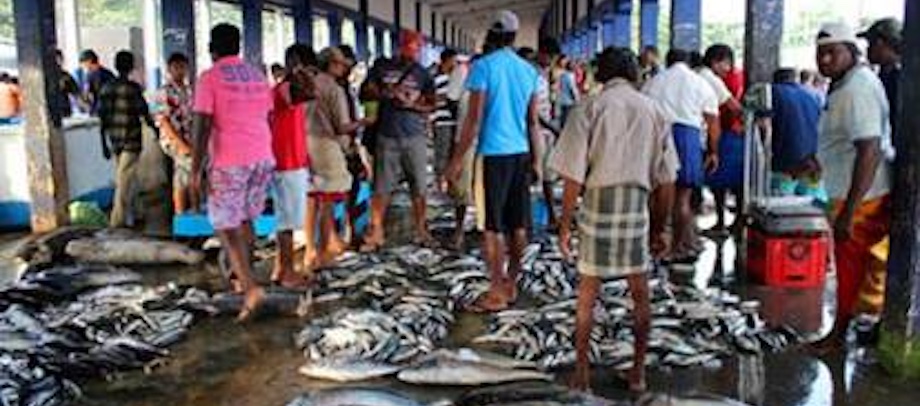Sri Lanka to give priority for addressing issues in fish loss and waste
By K.B. Chandrani Pushpalatha – National Project Coordinator
Fish contribute more than 50% of animal protein intake of Sri Lankan people. The per capita fish consumption of Sri Lanka in recent years varied between 15.1 – 17.3 kg/year. Fish production from three subsectors, namely coastal fisheries, deep sea/offshore fisheries and inland fisheries and aquaculture contributed 45.8%, 35.0% and 19.2% respectively to the total average annual fish production of 485,770 tons during last 5 years. Around 2.7 million people are involved in fishing, aquaculture and other related livelihoods and the fisheries and aquaculture sector contribute to around 1.3% of the country’s Gross Domestic Product (GDP), with the marine subsectors dominating that contribution.
One of the major issues prevailing in the fisheries and aquaculture industry in Sri Lanka is the high fish loss and waste (FLW) throughout the value chain, which resulted in reduced amount of fish available for consumption of local people as well as for exports, increase in price of fish, negatively impacting the nutritional security of the population and increase pressure on the fish stocks threatening sustainability.
Available information shows that post- harvest losses in fish is very high in particularly in marine fisheries, when compared to inland fisheries and aquaculture subsector. Available reports indicate that post-harvest losses are very high (40%-60%) in deep sea/offshore fisheries subsector, where multiday fishing involved. Storage and handling or processing methods onboard the vessel and throughout the value chain are generally poor and unhygienic. The losses at harvesting can be attributed to catching methods, the type of fishing gear used and lag time between the catch and marketing. Recent study on multiday fisheries, which is initiated by the World Bank, attributed longer time at sea that vessels are being required to fish and poor onboard fish handling for poor fish quality. The lack of appropriate fish handling equipment and suitable facilities at fish landing sites, lack of proper chilled storage conditions, improper conditions under which fish transported etc., contribute significantly to post-harvest losses of fish. The display, handling and storage of fish in majority of fish sales outlets and stalls need improvements to ensure good quality and food hygiene. Approximately 26% of fish harvest is dried and smoked and improvements in processing and equipment used are required to enhance quality of these products too. Addressing FLW issues in Sri Lanka should be focus on improving storage conditions and on-board handling practices in fishing vessels, introducing proper and hygienic handling practices in respect of all steps in the value chain, modernizing processes adopted in dry fish and smoked fish preparation and introducing procedures for maintaining fish quality and hygienic conditions in fish sales outlets or stalls.
It has become necessary to introduce strategies aimed at preventing and reducing fish loss throughout the value chain. FAO under NORAD funded project “Improving the sustainable use of fishery and aquaculture products and their contribution to livelihood and food security” is supporting the Government of Sri Lanka to reduce and mitigate fish losses and waste in the fisheries and aquaculture value chain. The project is planned to conduct loss assessment of selected value chains using fish loss assessment methodologies and identify and prioritize significant achievable FLW reduction/prevention opportunities using multi-dimensional approach to FLW solutions involving policy, technology, skills and knowledge, services and infrastructure, regulatory environment, social and gender equity, and good linkages to and understanding of markets.
Learn more about the project and view the fact sheet here.

